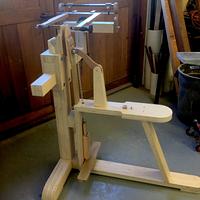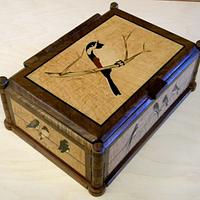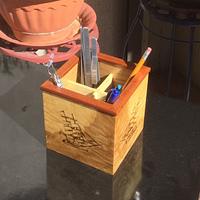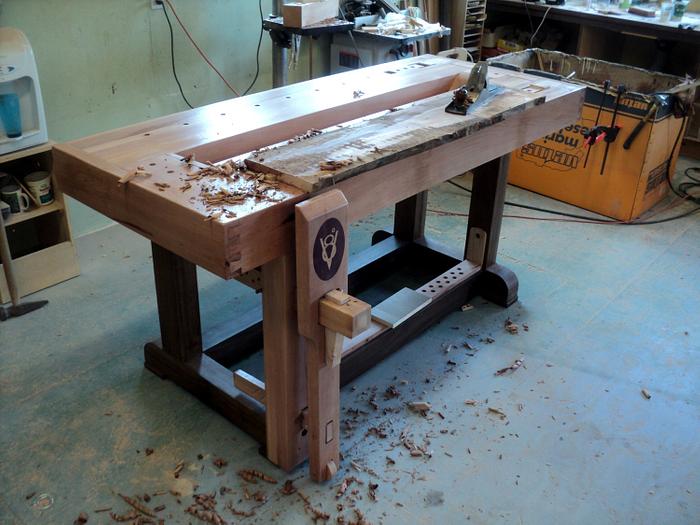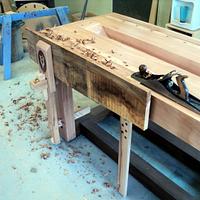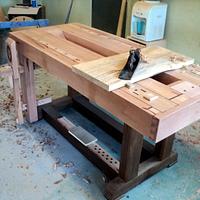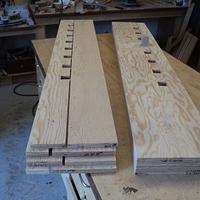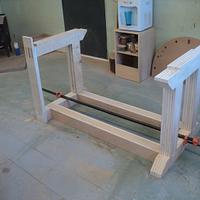
shipwright
in almost 12 years
More from shipwright
Outside the Box Workbench, This One is Different
This is the new bench I built a couple of years. I have to say that I’d never had one of these and quite frankly, never understood what their attraction was. Then one day it dawned on me that I had spent my career building big things with power tools and that these were for building smaller things with hand tools. Then it all made sense and I decided I would build one.
My thought process for this sort of thing is a little different than some. I don’t ask myself ”How are these things made?” and go looking at examples or scouting for plans. My process starts with “What does it have to do?” and then plans the most interesting way to accomplish those goals. That and I love reinventing the wheel.
To make a long story a little shorter, I ended up with a rather different bench.
This may be a bench for you if:
1) You want a solid bench that’s easy to build with simple tools
2) You want a heavy rigid bench but don’t want to break the bank buying hardwood and hardware.
3) You enjoy having something a little different.
This is not the bench for you if you see building your bench as an opportunity to learn / practice fine joinery and at the end of the journey have a beautiful hardwood masterpiece as the centerpiece of your shop. I have nothing but admiration for those who view it this way…. but this isn’t the bench for you.
In my mind a good bench of this type was to hold work in vertical and horizontal positions that would allow work to be done on both the faces and the edges. It had to be heavy and it had to be rigid. If possible it should look nice in the bargain. Above all it had to have a very powerful grip. If I failed in that , I would truly fail…. I don’t think I did.
This is getting long and as I sense a construction blog coming on I will cut to the photos and save the long explanations for the said treatise.
The photos show:
1) Planing a surface with the board held in one of the “8 Degree Vertical” wedge wagon vices.
( Yes we Canadians and Brits spell it “vice”)
2) Planing an edge with the portable Deadman and the “8 Degree Vertical” wedge leg vice.
3) Planing a surface held in the two wagon vices.
4) The plywood “guts” of the half-tops.
5) The plywood “guts”of the legs.
By now you will have seen that this bench is really plywood and only the trim is hardwood. That wood incidentally is arbutus (madrone) and it is used for the front, back and end boards and vices as well as the cosmetic top. The legs have been shamelessly veneered to look like solid walnut.
I have done a fair bit of pretty-ing up here but the main structure of this bench can almost be said to be buildable with a skilsaw and a hammer.
The structural joints are all interlaid layers of plywood that, when all assembled, resemble and have the strength of perfectly fitted finger joints but in any one layer they are all just butt joined.
That’s enough. I have far to much to tell about this bench and it’s vices to bore you with here. Those who are interested can follow the blog and get bored to sleep for several nights at their own risk.
Suffice to say that I think this concept will be of value to some of you and I hope that this won’t be the last ”V8” I see here.
Sketchup is posted here https://3dwarehouse.sketchup.com/model.html?id=eac92d1e533271b452d9fc61873164a1
A full build blog starts here: https://craftisian.com/blog_series/168-the-v8-wedge-powered-workbench
Thanks for looking in and please ask questions, comment or criticize.
Paul
The early bird gets the worm but its the second mouse that gets the cheese.
4 Comments
It’s a great bench Paul.
I have had it on my favorite since you posted it.
Abbas, Castro Valley, CA
Wow that’s an amazing bench Paul.
woodworking classes, custom furniture maker
Very impressive work bench .
Wheaties
Totally smart and innovative bench. A typical project by you Paul.
Mike, an American living in Norway









